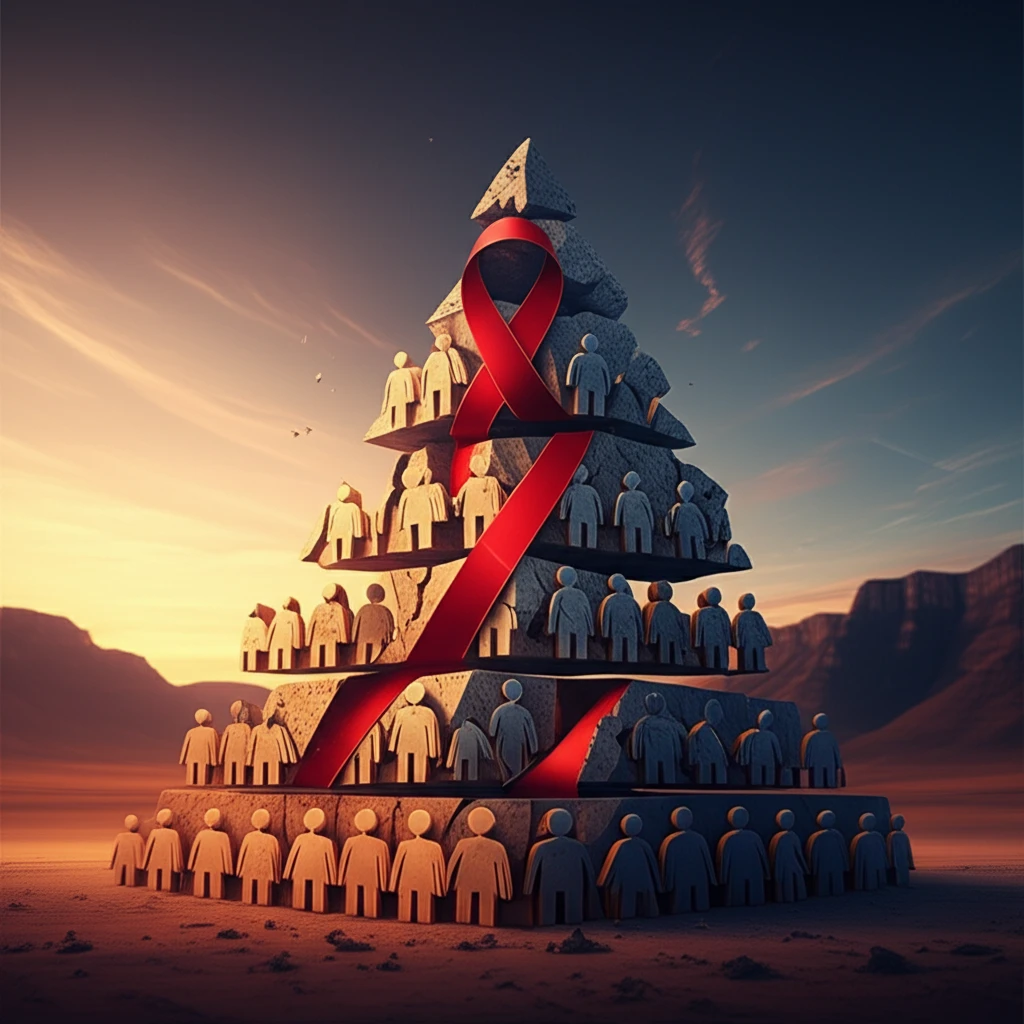
Lesotho's Silent Struggle: How HIV/AIDS Reshapes a Nation
"Unveiling the unseen impact of HIV/AIDS on Lesotho's population structure and what it means for the future."
Lesotho, a small nation completely surrounded by South Africa, faces a significant challenge: HIV/AIDS. With one of the highest HIV prevalence rates in the world, the epidemic's impact extends far beyond individual health, deeply affecting the country's population structure and overall development. Understanding these demographic shifts is crucial for targeted interventions and effective disaster management strategies.
While much research focuses on treatment and care, this article sheds light on the often-overlooked impact of HIV/AIDS on Lesotho's demographic profile. By examining data from national censuses, health surveys, and the perceptions of healthcare workers, we uncover how the epidemic is reshaping the nation's age composition, sex ratio, and dependency ratio.
This analysis will explore the insights of Lesotho's healthcare workers on HIV/AIDS progression, evaluate whether HIV/AIDS is being managed effectively as a disaster, and investigate the concrete impacts on the population's demographic structure. By understanding these challenges, we can better address the unique needs of Lesotho and similar nations.
How HIV/AIDS is Perceived and Managed in Lesotho

A survey of healthcare workers in Lesotho reveals critical perceptions about the HIV/AIDS epidemic. A significant percentage of respondents believe that HIV/AIDS-related deaths are very high and that the disease is altering the population's age composition and sex ratio. These perceptions highlight the immense strain on the healthcare system and the perceived demographic changes within the country.
- High Perceived Mortality: A significant number of healthcare workers view HIV/AIDS-related deaths as very high.
- Demographic Shift: Perceptions indicate changes in age composition and sex ratio due to HIV/AIDS.
- Supportive Disaster Management: The Lesotho Disaster Management Authority primarily offers support to the National AIDS Commission.
Addressing the Demographic Challenges Ahead
This research underscores the significant demographic impact of HIV/AIDS in Lesotho, directly influencing its population structure. These changes necessitate a re-evaluation of current strategies and a more integrated approach to disaster management that fully incorporates the complexities of the HIV/AIDS epidemic.
Moving forward, it is essential to prioritize ongoing research to monitor these demographic shifts and their broader socio-economic implications. Risk analysis and reduction measures aligned with international best practices, such as the Hyogo Framework for Action, are crucial. Additionally, clear policies are needed to address discrimination and stigmatization, boosting the resilience of affected communities.
By acknowledging the profound influence of HIV/AIDS on its population, Lesotho can pave the way for targeted interventions, strengthened healthcare systems, and a more resilient future. Continuous monitoring, integrated strategies, and a commitment to equality are essential to navigate these demographic challenges and build a healthier, more prosperous Lesotho.
